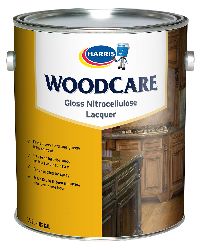
So why and how is this UV-cured non toxic wood finish so effective at eliminating VOCs? This article from Yale’s sustainability department does a great job of comparing a more common finish to a UV finish:įor every gallon of nitrocellulose lacquer, 25 percent is composed of solids. MAS is one of the most stringent third party certifications for guaranteeing residence hall furniture with the highest indoor air quality ratings. In fact, our UV finish is one of the main reasons why our furniture was awarded the MAS Greencertification.

When exposed to UV light, polymerization occurs, and so the adhesives harden or cure, usually within a few seconds. How exactly does a UV finish work? According to wikipedia:Ĭertain inks, coatings, and adhesives are formulated with photoinitiators and resins. It’s a non toxic wood finish that’s odorless and clean. Instead of using a solvent-based finish like nitrocellulose lacquer, we apply a UV-cured finish. This is one of the main reasons why DCI uses a finishing process that emits zero VOCs. So no-VOC assurances for your residence hall furniture are a must. Off-gassing furniture is one of the leading culprits contaminating indoor air quality. Long story short, you don’t want VOCs in your residence halls and you want to ensure your furniture has a non toxic wood finish. In case it’s not clear, that’s a huge difference.
#Photo initiater for nitrocelulose lacquer free#
Students exposed to normal furniture that emits standard levels of VOCs performed half as well as students who were tested in an environment that was free of VOCs. They found that cognitive performance scores for the participants who worked in the green+ environments were, on average, double those of participants who worked in conventional environments scores for those working in green environments were 61% higher. Researchers exposed participants to high concentrations of VOCs, similar to those emitted from common office materials. A recent study from the Harvard School for Public Health analyzed the impact of VOCs and indoor air quality on student cognition. What are the implications of all this for student housing? For one thing, you definitely don’t want to mess around with VOCs. The Startling Effects of VOCS on Student Cognition On the whole, the industry has been slow to respond to voluntary and mandated standards.

They can be present in paints, coatings such as varnishes and cleaning products.įor years, the federal government has prodded furniture companies to eliminate these toxic agents from their manufacturing processes. Volatile organic compounds, or VOCs, are carbon-containing substances that easily become vapors or gases. And historically, most wood finishes were filled with VOCs. You may be surprised to learn just how important your choice of non toxic wood finish is for the health of your students and the quality of your furniture.įurniture has a huge impact on indoor air quality. So it’s important for anyone who is buying residence hall furniture to gain clarity around VOCs before they commit to buying any furniture. Why You don’t Want VOCs in Your Furniture But the truth is, a lot of companies still use materials in their furniture that off-gas toxic VOCs. We’ve used this nontoxic eco-friendly UV-cured finish here at DCI for over a decade. Specifically, non toxic wood finish that emits zero VOCs which are instantly cured (hardened) by interacting with a harmless UV light. Interestingly enough, solutions have been around since the mid-1970s. Those are the stinky and toxic chemicals that become vapors or gasses as your wood finish transforms from liquid to solid.Īnd it turns out that inhaling those vapors can seriously compromise human health.įor the last several years, in the wake of increased attention to the health impacts of indoor air quality, the hardwood furnishings and floorings industries have worked to make non toxic wood finish the norm and free their finish from dangerous VOCs.

You see, part of what you’re smelling is something called volatile organic compounds or VOCS. It turns out that subtle suspicion you were harboring in the back of your mind- It can’t be good for me to be breathing this in!-was accurate. Have you ever wondered about that funny smell coming from your new wood floor or your new wood furniture? Or maybe, like me, you felt a little light-headed after being in a building where you encountered that same smell.


 0 kommentar(er)
0 kommentar(er)
